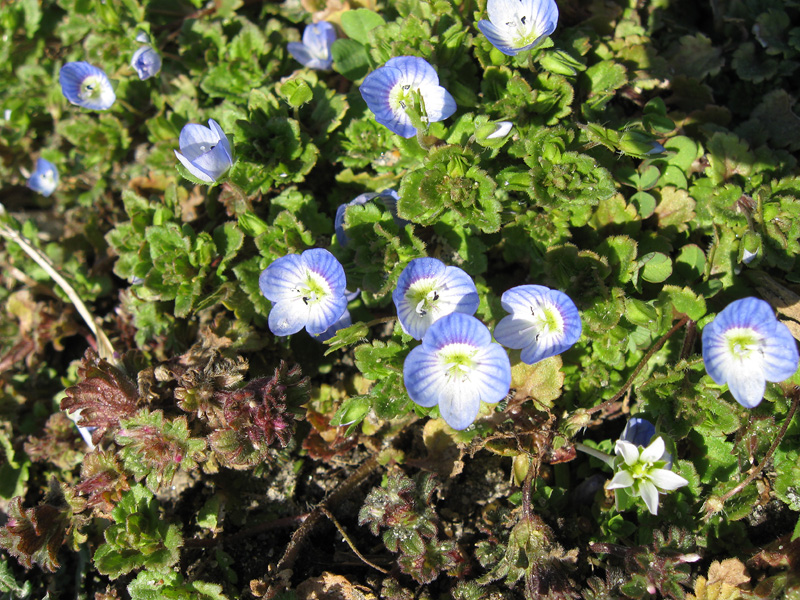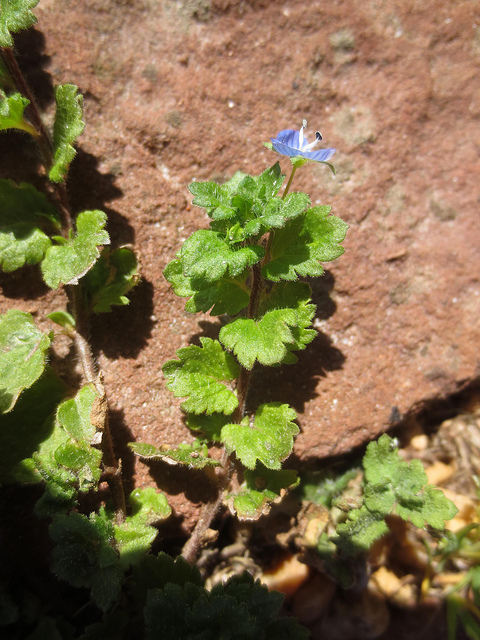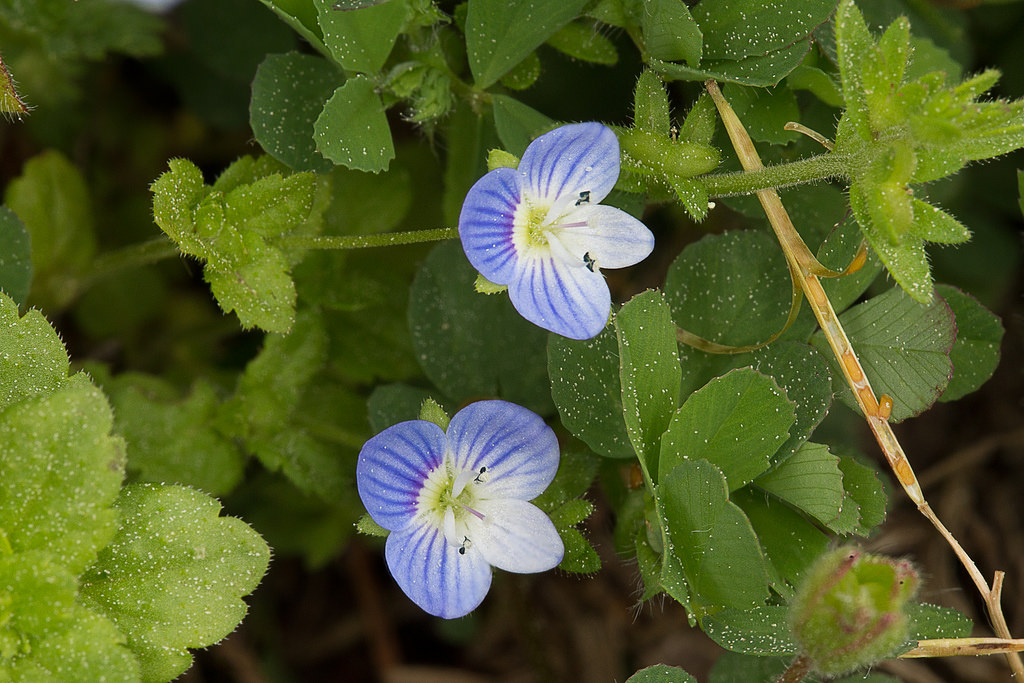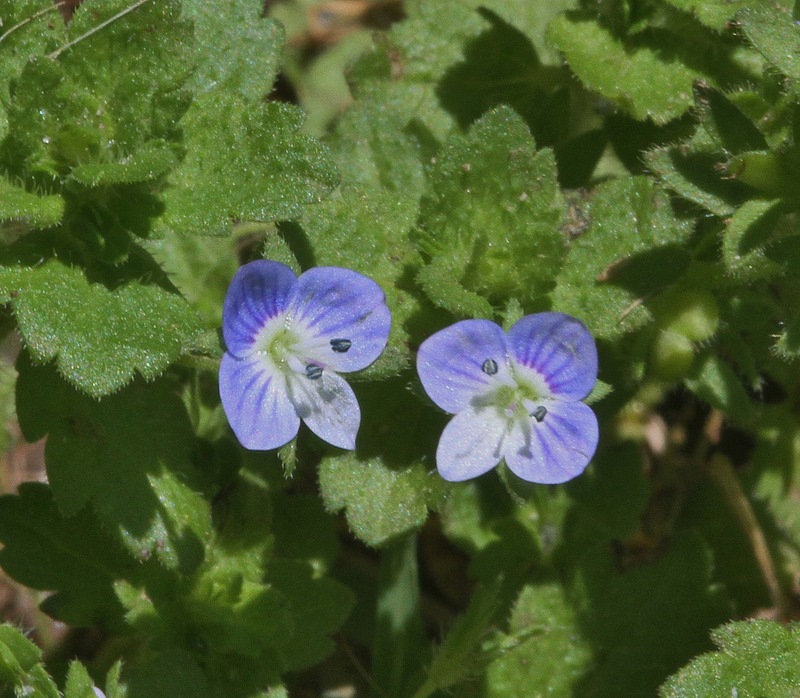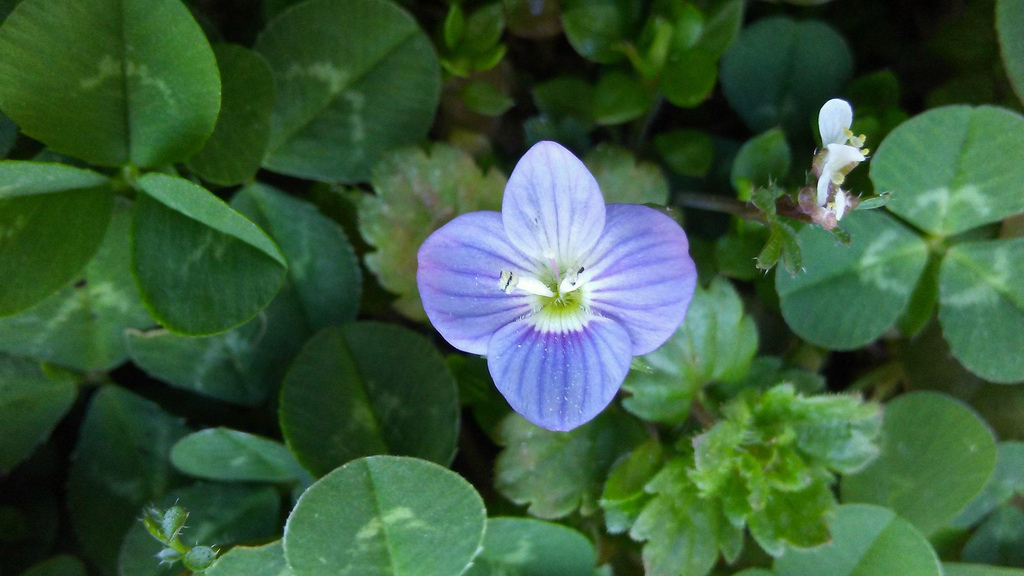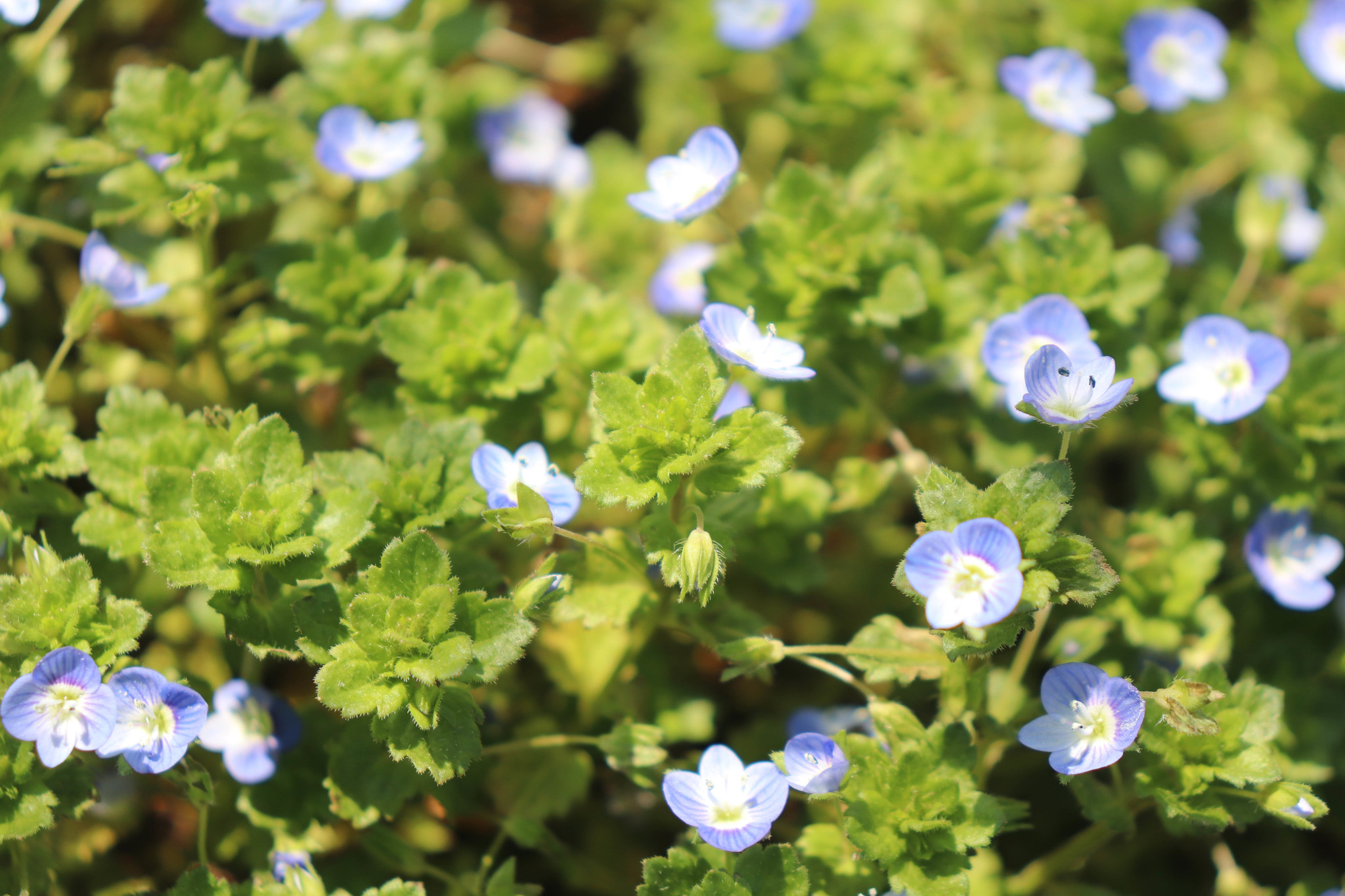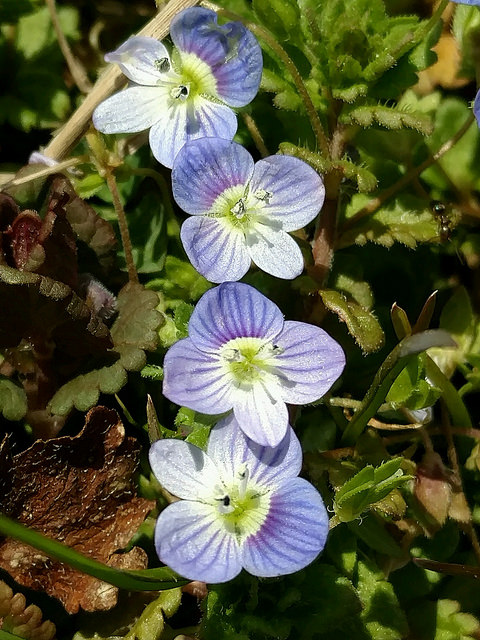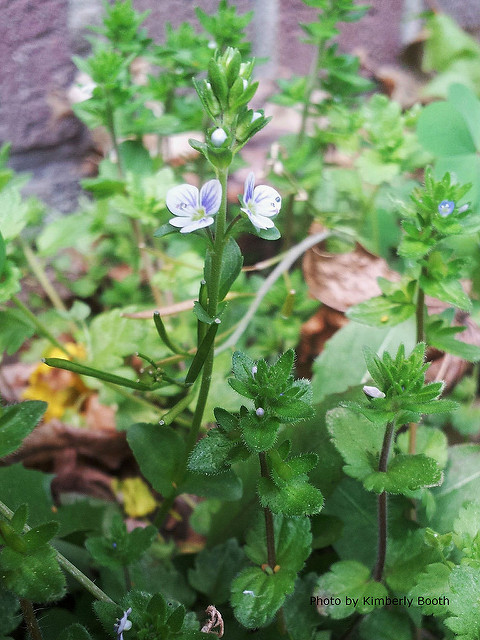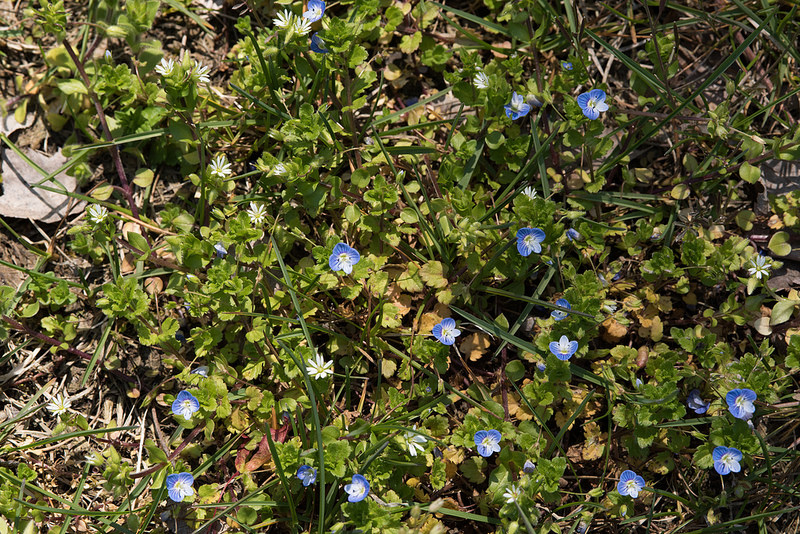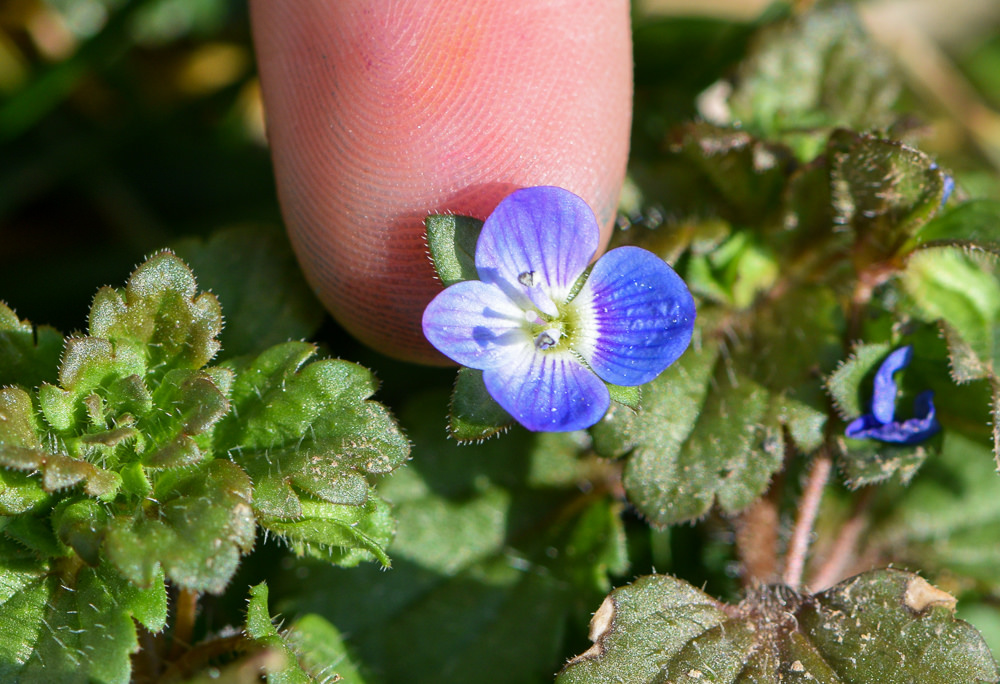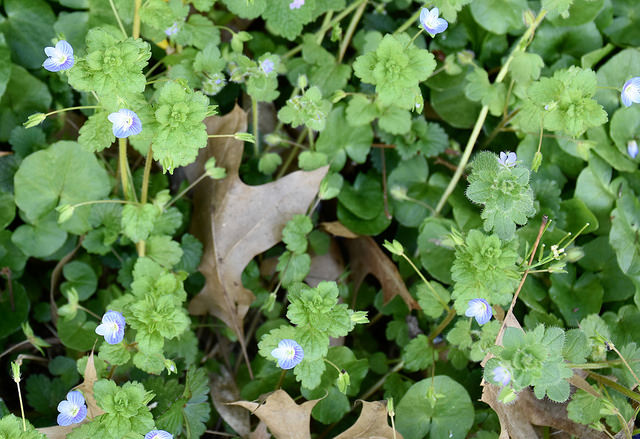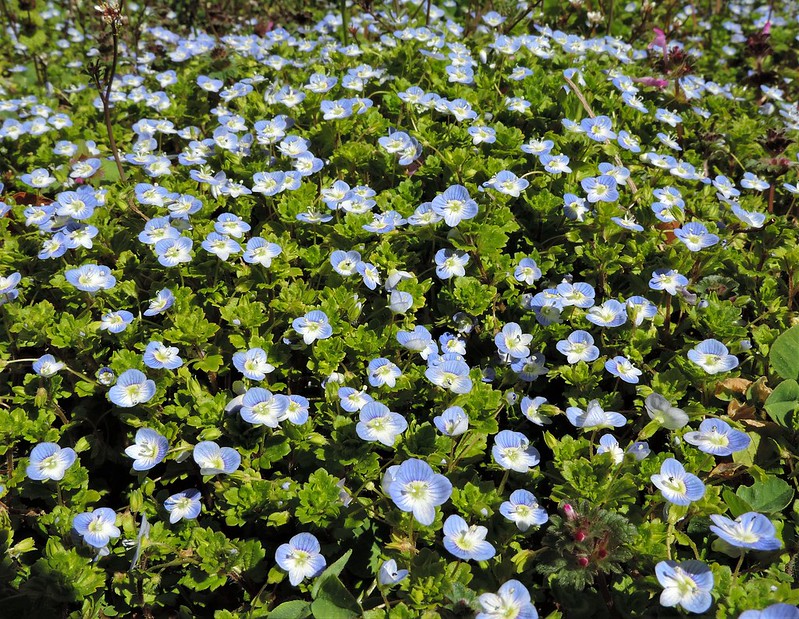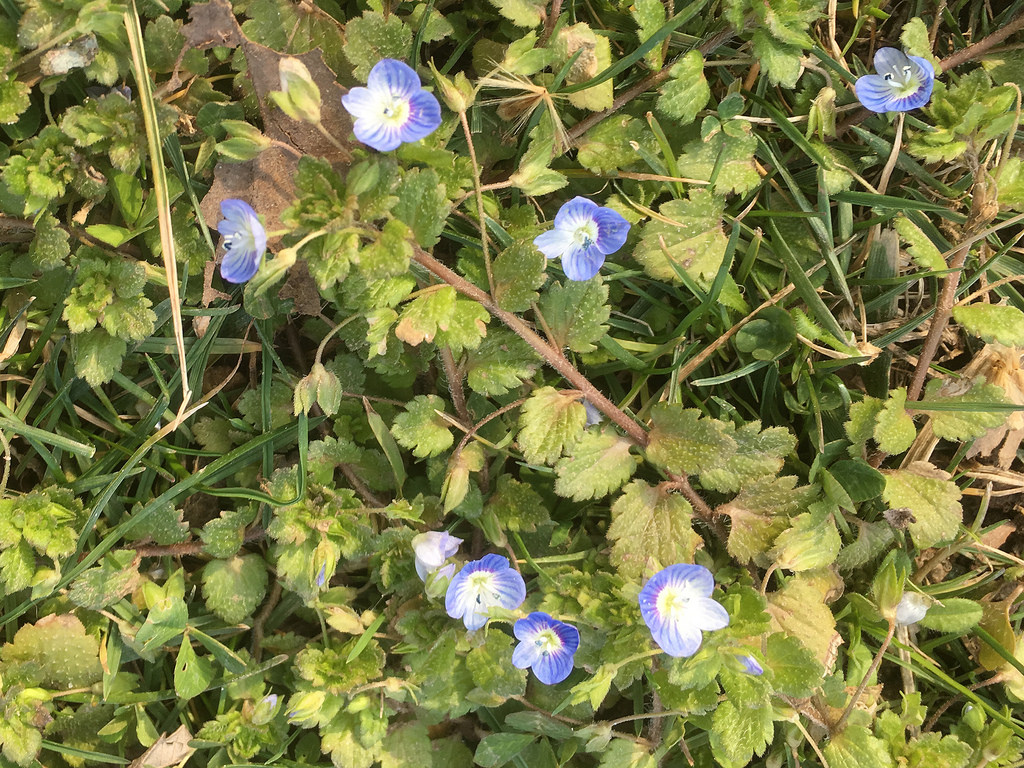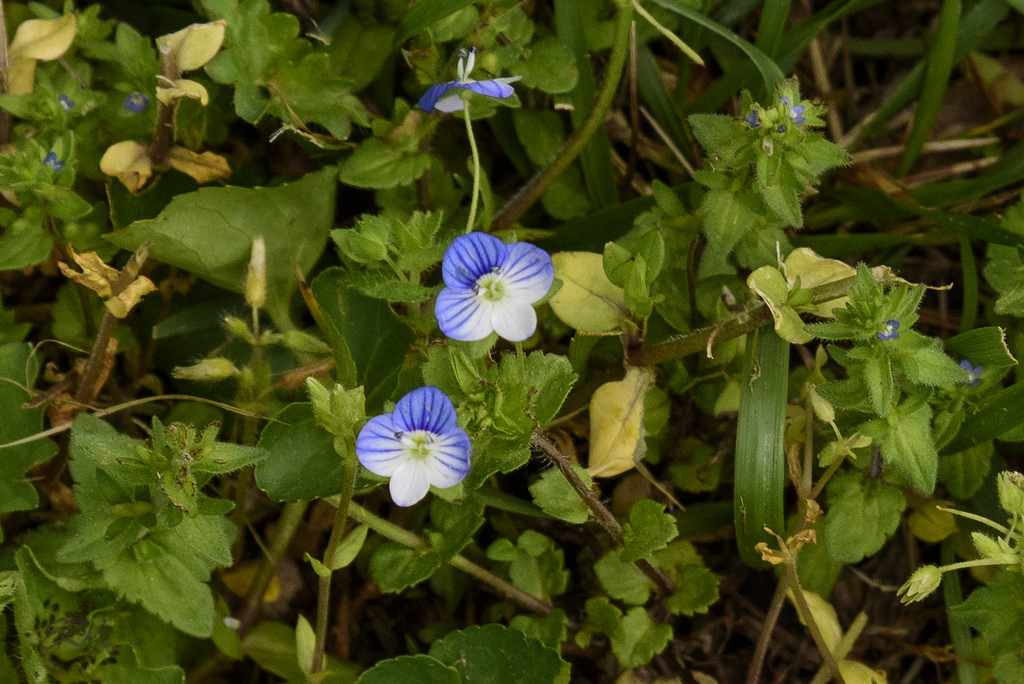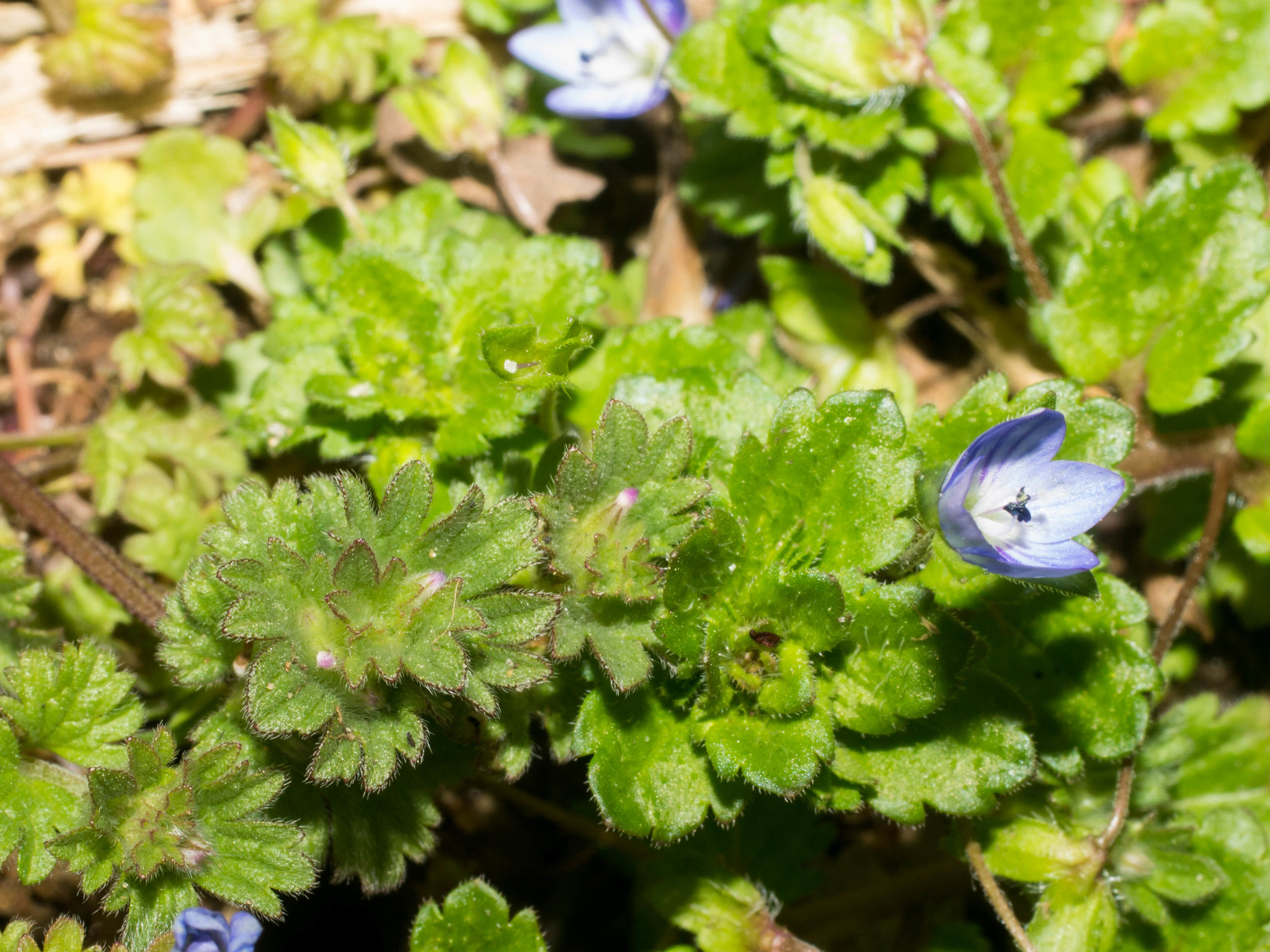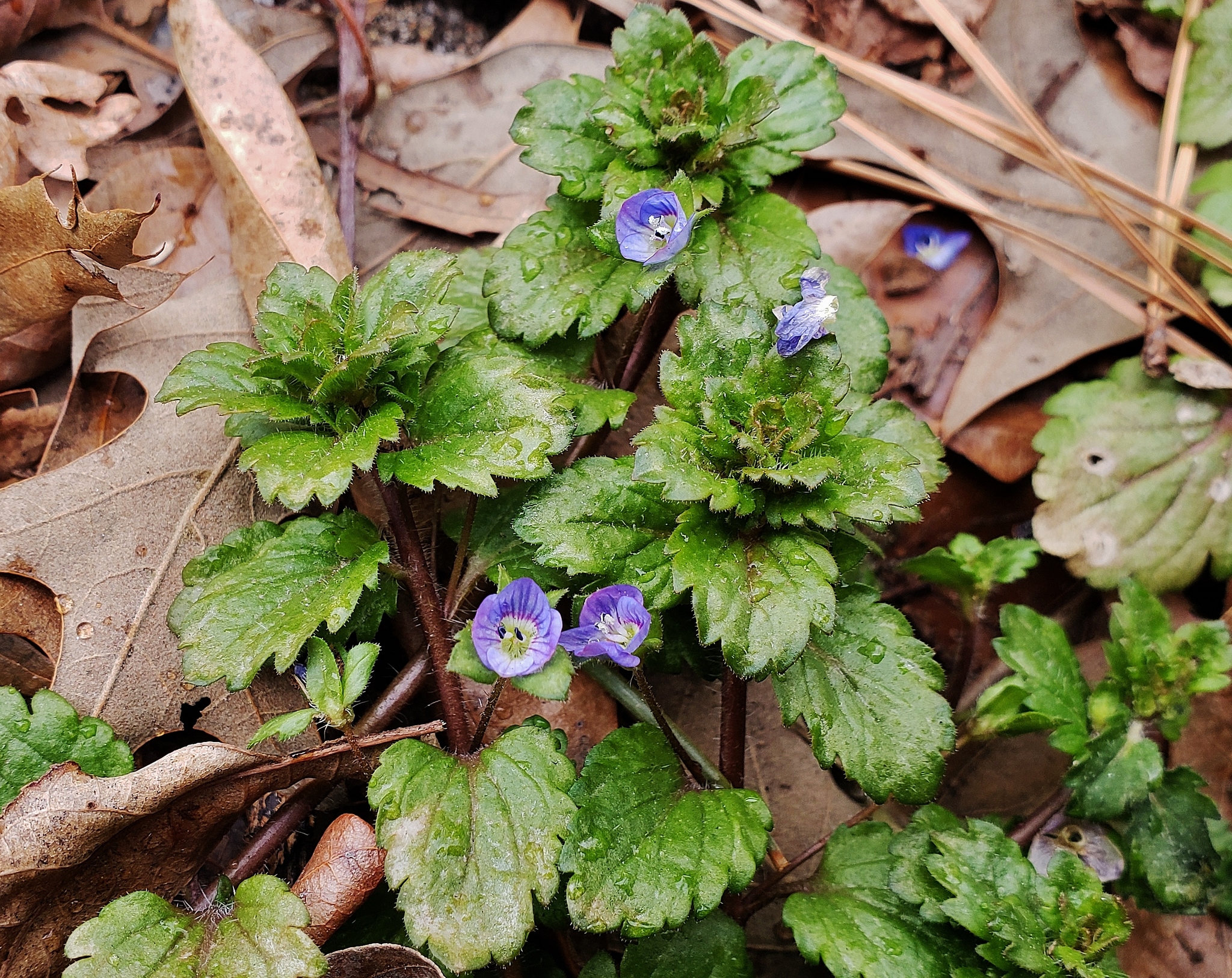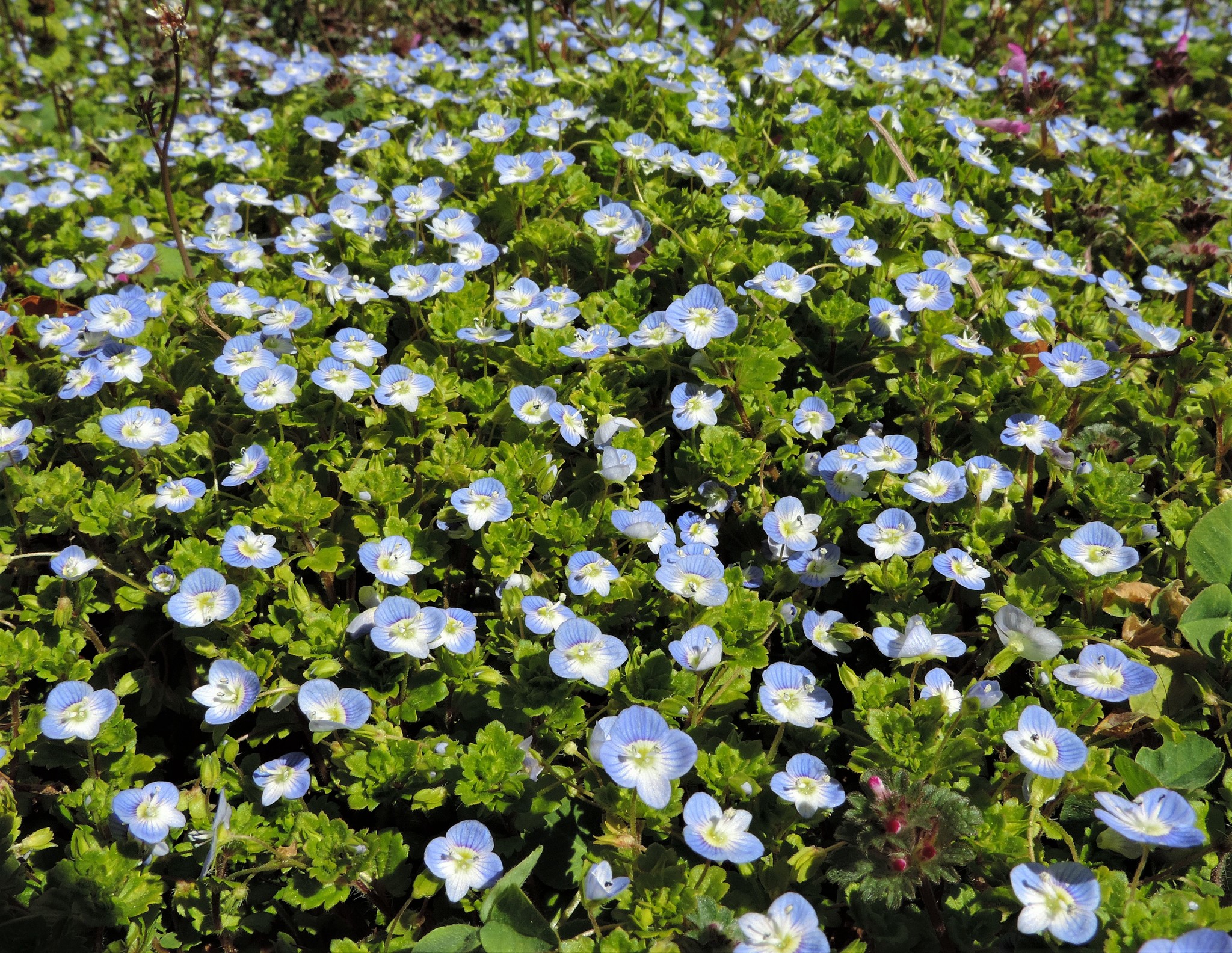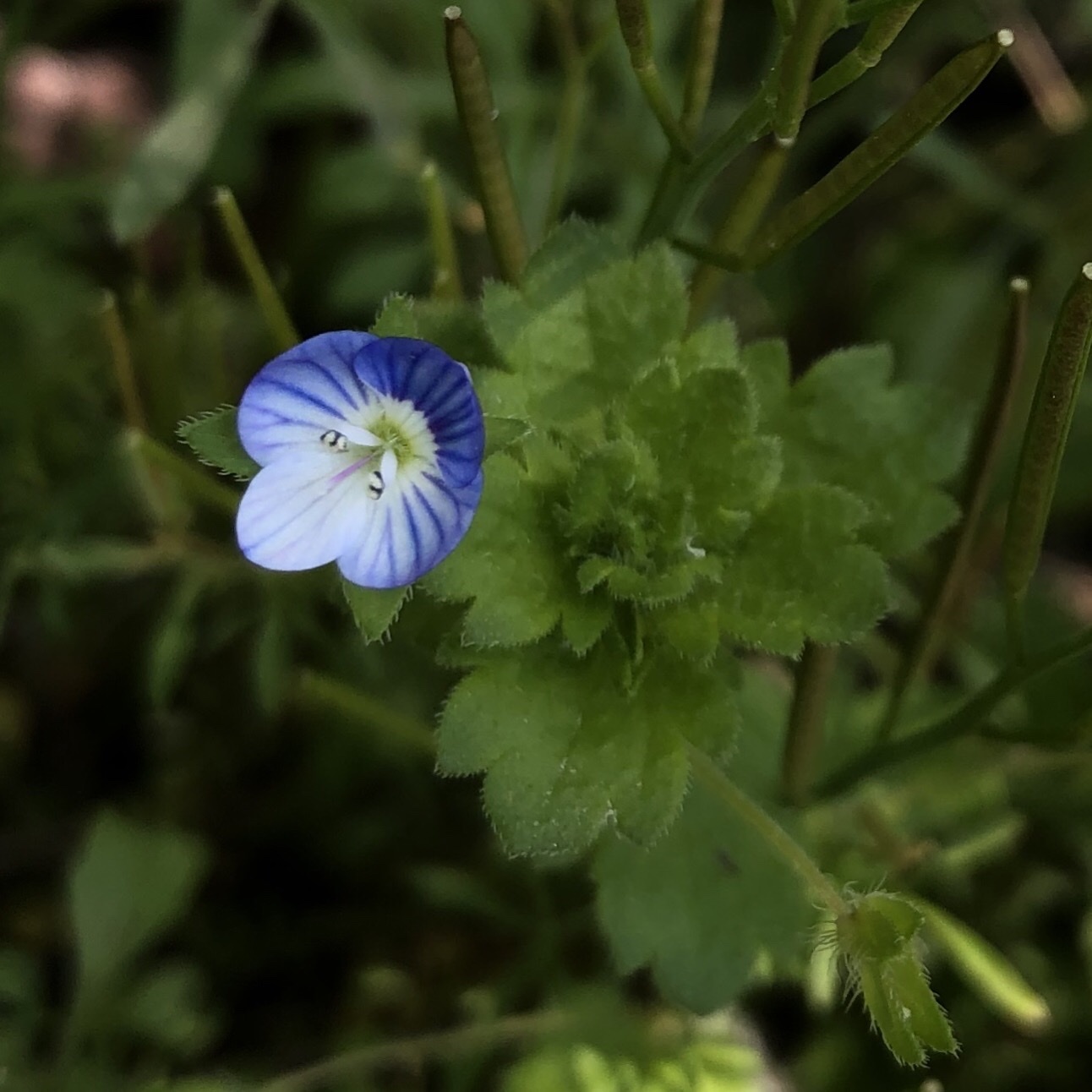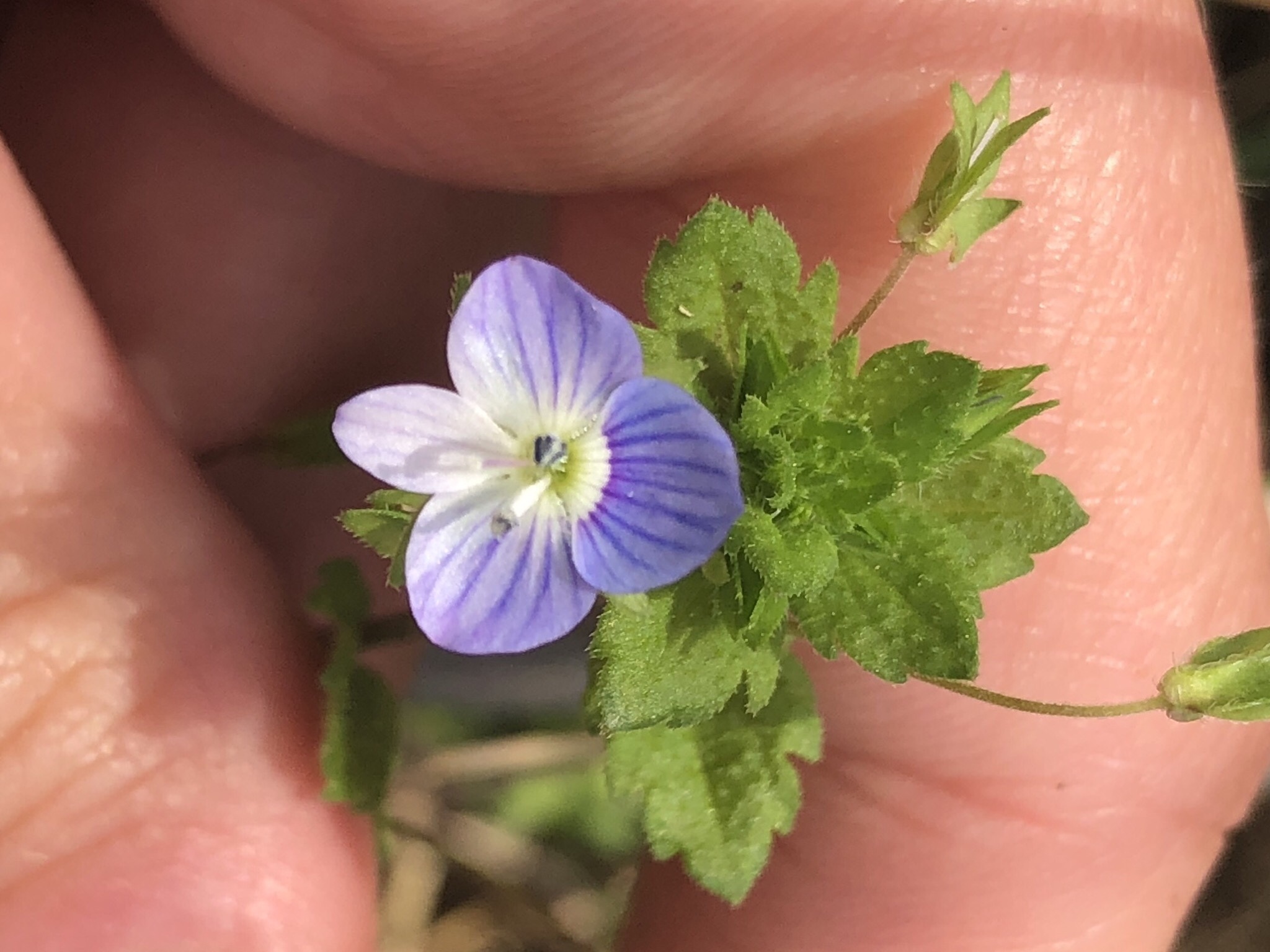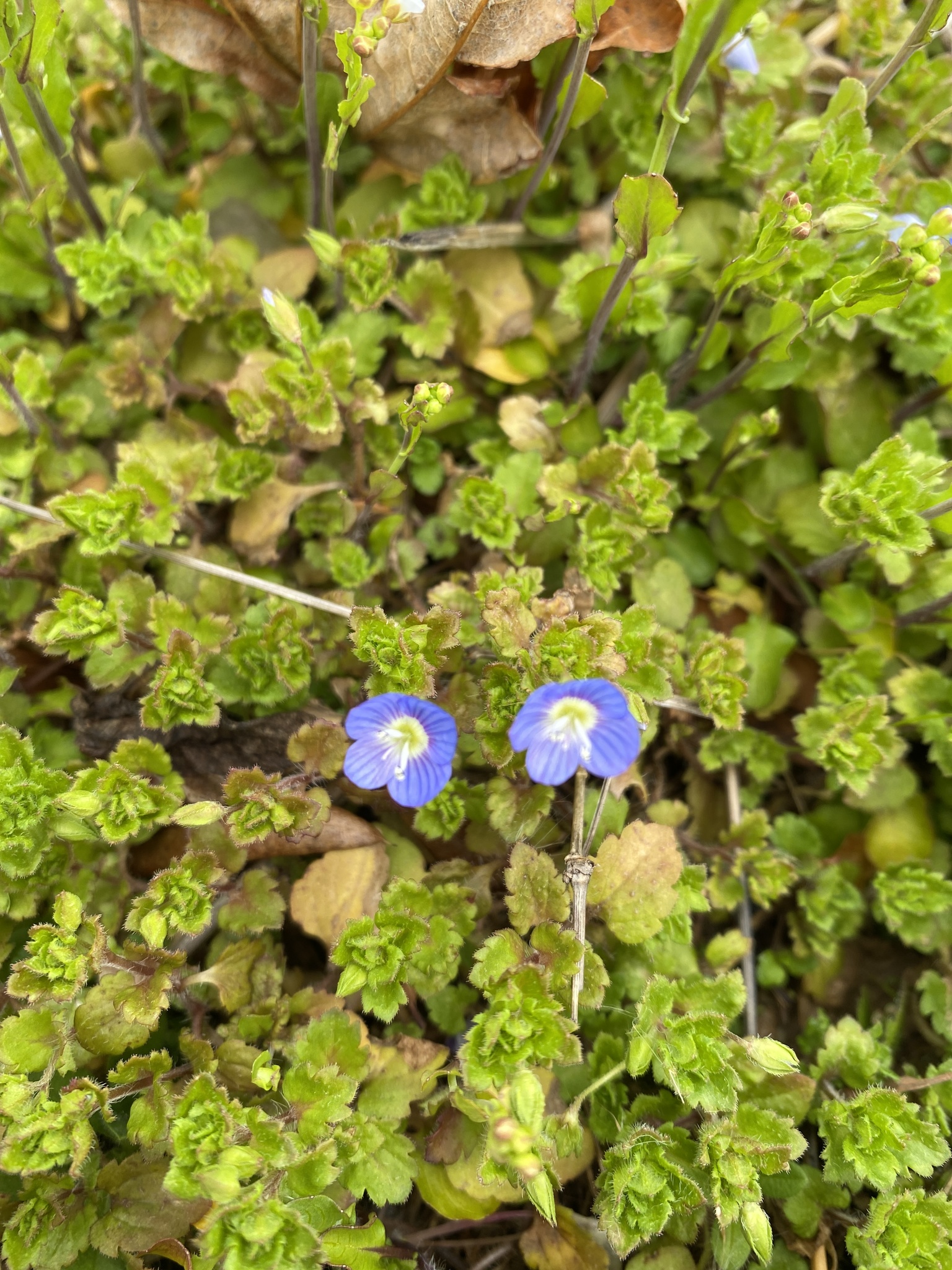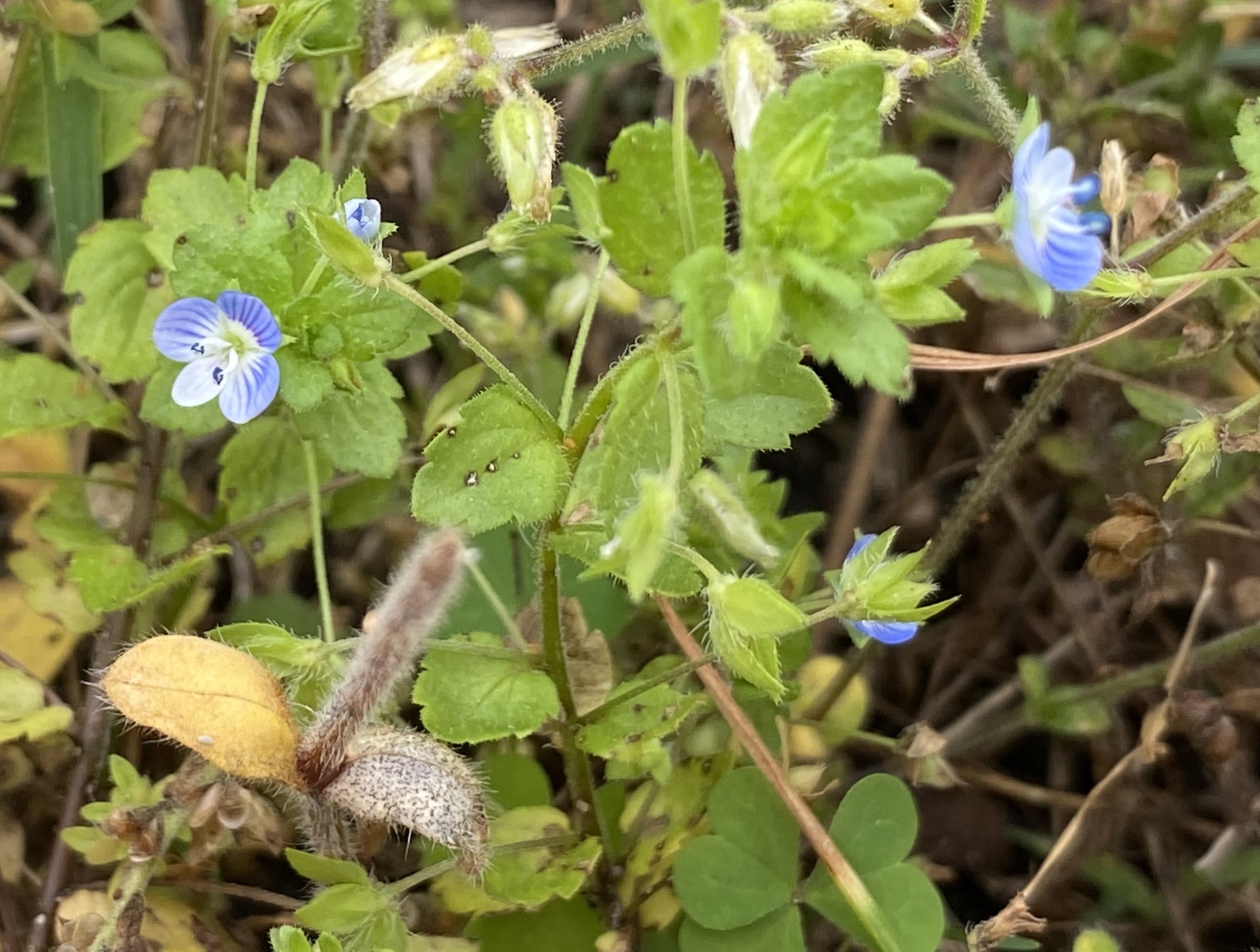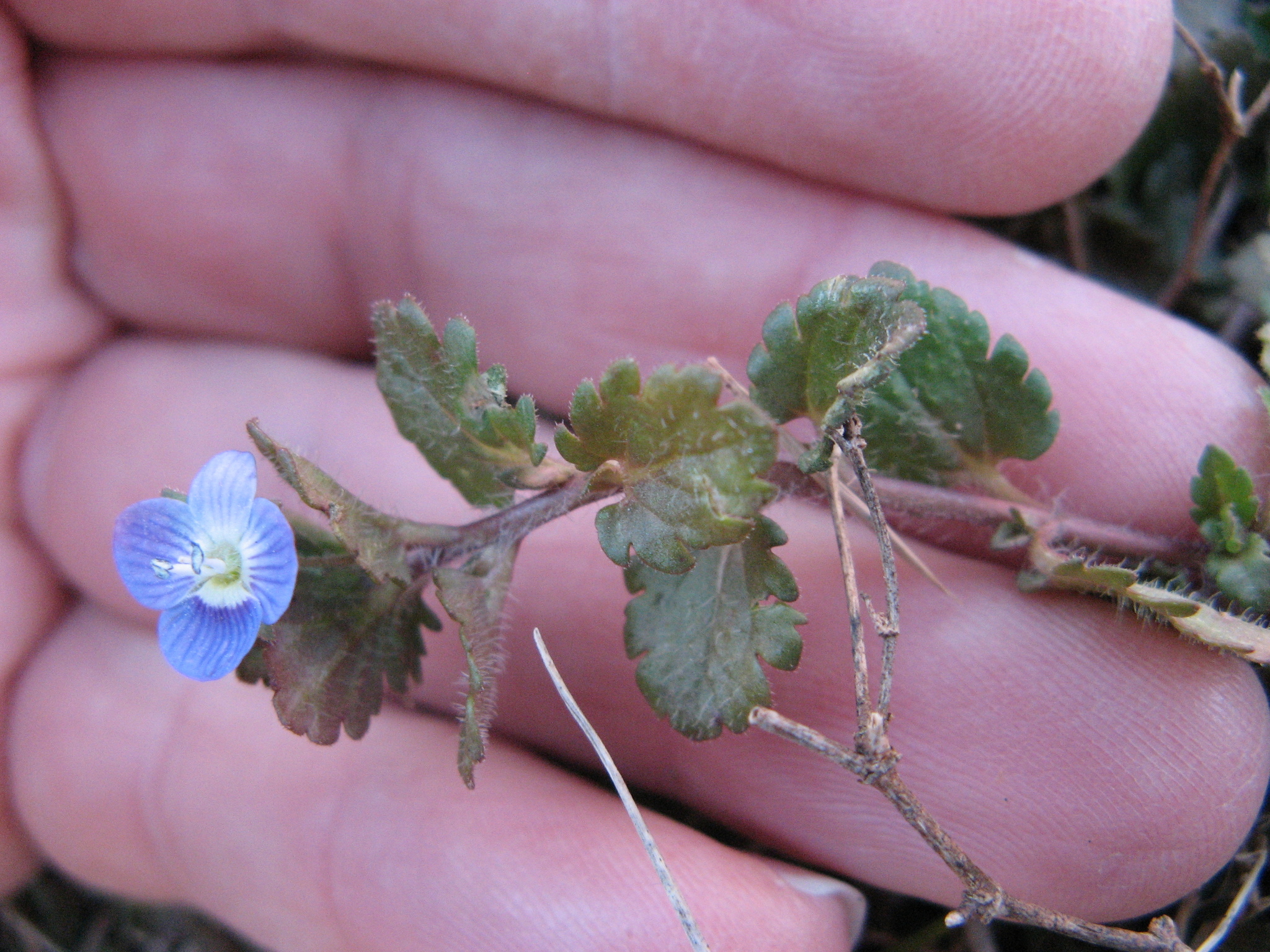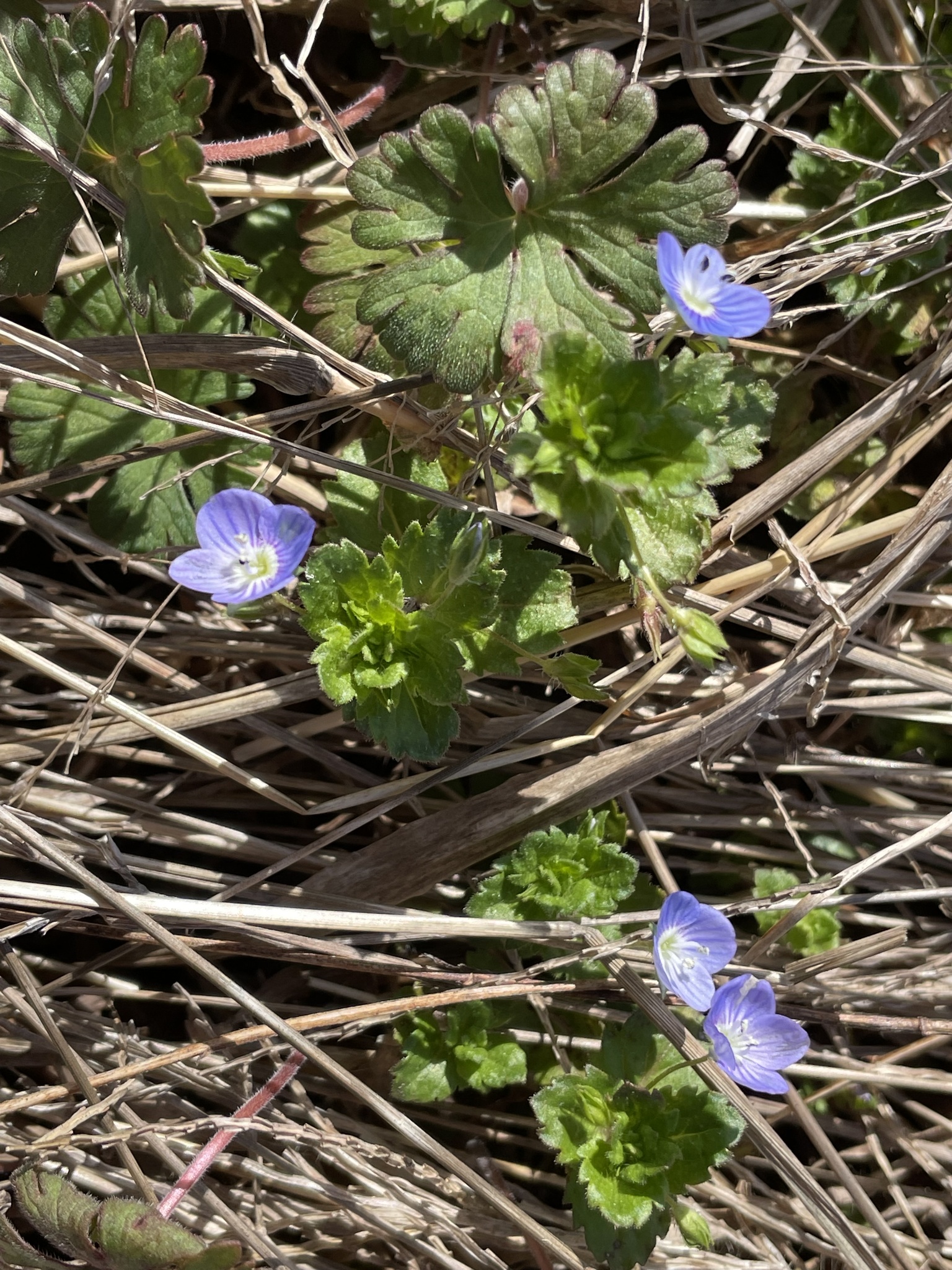Map Snapshot

























1,404 Records
Seasonality Snapshot
Source: Wikipedia
| Veronica persica | |
|---|---|

| |
| Scientific classification | |
| Kingdom: | Plantae |
| Clade: | Tracheophytes |
| Clade: | Angiosperms |
| Clade: | Eudicots |
| Clade: | Asterids |
| Order: | Lamiales |
| Family: | Plantaginaceae |
| Genus: | Veronica |
| Species: | V. persica
|
| Binomial name | |
| Veronica persica | |
| Synonyms[1] | |
| |
Veronica persica is a flowering plant in the family Plantaginaceae. Common names include birdeye speedwell,[2] common field-speedwell,[3] Persian speedwell, large field speedwell, bird's-eye, or winter speedwell. It is native to Eurasia and is widespread as an introduced species in the British Isles (where it was first recorded in 1825[4]), North America, eastern Asia, including Japan and China, and Australia and New Zealand.
Description
[edit]Veronica persica is an annual that reproduces from seed.
Its cotyledons are triangular with truncated bases. The short-stalked leaves are broadly ovate with coarsely serrated margins, and measure one to two centimetres (0.4 to 0.8 in) long. The leaves are paired on the lower stem and are alternately arranged on the upper parts. The plant has weak stems that form a dense, prostrate groundcover. The tips of stems often grow upright.
The flowers are roughly one centimetre (0.4 in) wide[5] and are sky-blue with dark stripes and white centers. They are zygomorphic, having only one vertical plane of symmetry. They are solitary on long, slender, hairy stalks in the leaf axils.
The seeds are transversely rugose and measure between one and two millimetres (0.04 and 0.08 in) long. There are five to 10 seeds per locule in the fruit.[6]
Photographic examples can be seen on iNaturalist.
Similar species - Veronica persica fruit have lobes that widely diverge to form a spreading 'V', and solitary flowers emerging from the stem with the leaf stalks, whilst the flower stalks are regularly much longer than the leaves. Similar species include Veronica polita and Veronica agrestis (whose fruit lobes are parallel and flower stalks are shorter than or equal to the leaves), Veronica crista-galli (whose flowers and fruits are smaller than the calyx, and the calyx is formed of two bilobed parts not four unlobed parts), Veronica filiformis (whose small round leaves are smaller than or equal to the flowers]], Veronica chamaedrys and Veronica montana (whose flowers are not solitory but form short unleafy spikes of flowers), and Veronica hederifolia (whose flowers are small and leaf lobing has a different appearance).[7]
Habitat
[edit]The plant grows in fields and lawns. It prefers moist conditions and grows well in loamy soil.[8]
Horticultural uses
[edit]Although many species in the genus are used in gardens (such as V. exalta, V. incana, V. gentianoides, V. longifolia, V. perfoliata, and V. spicata),[9] this species is generally seen as a weed[10] and has no known horticultural uses.
Herbal medicine
[edit]Afghani herbalist, Mahomet Allum, used the plant to treat patients with heart trouble, in Adelaide, Australia, in the mid-20th century.[11] It is also used for snakebite treatment, hemorrhaging, rheumatoid arthritis, asthma, and as an expectorant.[12]
Further reading
[edit]- Fermanagh Species Account - Biological account from Farmanagh, Ireland
Photo Gallery
[edit]-
Unripe fruit showing lobes diverging to form a 'V'
References
[edit]- ^ "Veronica persica". Integrated Taxonomic Information System. Retrieved 17 May 2022.
- ^ NRCS. "Veronica persica". PLANTS Database. United States Department of Agriculture (USDA). Retrieved 29 July 2015.
- ^ BSBI List 2007 (xls). Botanical Society of Britain and Ireland. Archived from the original (xls) on 2015-06-26. Retrieved 2014-10-17.
- ^ Blamey, M., et al. 2003. Wild flowers of Britain and Ireland: The Complete Guide to the British and Irish Flora. A & C Black, London.
- ^ Rhoads, A. F. and T. A. Block. Plants of Pennsylvania: An Illustrated Manual, 2nd ed. University of Pennsylvania Press, Philadelphia. 2007.
- ^ Gleason, H. A. and A. Cronquist. Manual of Vascular Plants of Northeastern United States and Adjacent Canada, 2nd ed. New York Botanical Gardens, New York, New York. 1991.
- ^ Peter Sell & Gina Murrell. Flora of Great Britain and Ireland, vol. 3, p. 464-474.
- ^ "Bird's Eye Speedwell (Veronica persica)". Illinois Wildflowers. Retrieved 17 May 2022.
- ^ Thomas, G. S. Perennial Garden Plants or the Modern Florilegium, 2nd ed. J. M. Dent and Sons, London. 1992.
- ^ Veronica persica. USDA Plants Database.
- ^ Amirul Husni Affifudin (2018). "Historical Archaeology Report: Mahomet Allum Khan". doi:10.13140/RG.2.2.23125.27365.
{{cite journal}}: Cite journal requires|journal=(help)[unreliable source?] - ^ Salehi, Bahare; Shivaprasad Shetty, Mangalpady; V. Anil Kumar, Nanjangud; Živković, Jelena; Calina, Daniela; Oana Docea, Anca; Emamzadeh-Yazdi, Simin; Sibel Kılıç, Ceyda; Goloshvili, Tamar; Nicola, Silvana; Pignata, Giuseppe; Sharopov, Farukh; del Mar Contreras, María; C. Cho, William; Martins, Natália; Sharifi-Rad, Javad (4 July 2019). "Veronica Plants—Drifting from Farm to Traditional Healing, Food Application, and Phytopharmacology". Molecules. 24 (13): 2454. doi:10.3390/molecules24132454. PMC 6651156. PMID 31277407.
